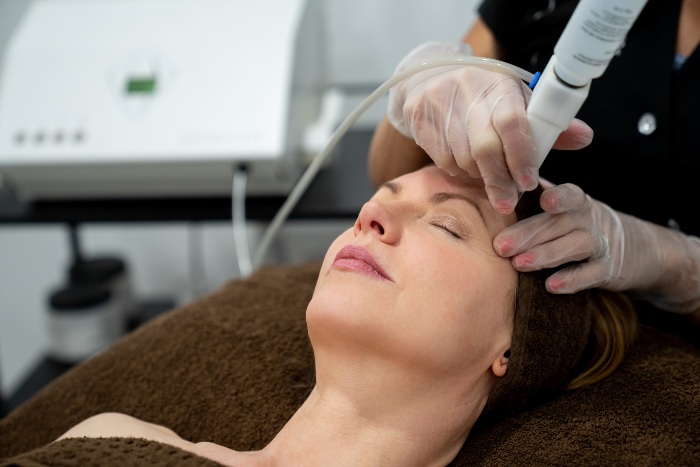Different Types of Laser Treatments for Skin

Laser treatments have become increasingly popular for those looking to improve their skin’s appearance. These treatments use focused beams of light to target specific skin concerns, offering a non-invasive way to enhance your look. Laser treatments can provide a customizable solution for acne scars, fine lines, or unwanted pigmentation. Below, we’ll explore a few of the most common types of laser treatments for the skin to help you understand your options.
Ablative Lasers
Ablative lasers are known for their powerful resurfacing capabilities. These laser treatments remove the outer layers of damaged skin, promoting the growth of fresh, new skin underneath. They are often used to reduce the appearance of wrinkles, scars, and uneven texture. Common examples include CO2 lasers, which target deeper skin concerns, and Erbium lasers, which offer a gentler option for surface-level issues. While effective, these treatments may require more downtime as the skin heals.
Non-Ablative Lasers
Non-ablative lasers work beneath the skin’s surface without affecting the top layer for a less invasive approach. These treatments stimulate collagen production and improve skin tone over time. Non-ablative lasers are commonly used to address mild wrinkles, sun damage, and uneven texture. They often require multiple sessions but typically involve less downtime compared to ablative options.
Fractional Lasers
Fractional lasers, a versatile option, can be both ablative and non-ablative. These lasers work by treating only a fraction of the skin at a time, leaving small untreated areas in between. This allows for faster recovery while delivering noticeable results. Fractional lasers are often recommended for reducing acne scars, stretch marks, and signs of aging. The treatment is designed to balance effectiveness with shorter recovery periods, making it appealing to many.
Pulsed-Dye Lasers
Pulsed-dye lasers target redness and unwanted blood vessels in the skin. These lasers use a focused beam of light to shrink blood vessels, which can improve the appearance of conditions like rosacea, spider veins, and certain types of scars. Pulsed dye treatments are relatively light on downtime and can often be completed quickly. They are a good option for targeted correction in specific areas.
Intense Pulsed Light (IPL)
Although technically not a laser, IPL uses a broad spectrum of light to address various skin concerns. This treatment is effective at reducing pigmentation, sun spots, and even hair removal. IPL works on the surface of the skin, making it suitable for those seeking a general improvement in their complexion. Sessions are usually quick, with minimal side effects, which makes them a convenient choice for busy individuals.
Choosing the Right Laser Treatments
Selecting the right laser treatment depends on your specific skin concerns, goals, and lifestyle. Factors such as skin type, the condition being treated, and recovery time play a role in determining the best option. Consulting with a trained professional can help you find the treatment that aligns with your needs. With various laser treatments available, taking the time to understand your options can lead to a more informed decision. Whether you’re considering a deep resurfacing laser or a subtle, non-invasive option, knowing what each treatment offers can help you achieve your skincare goals.





